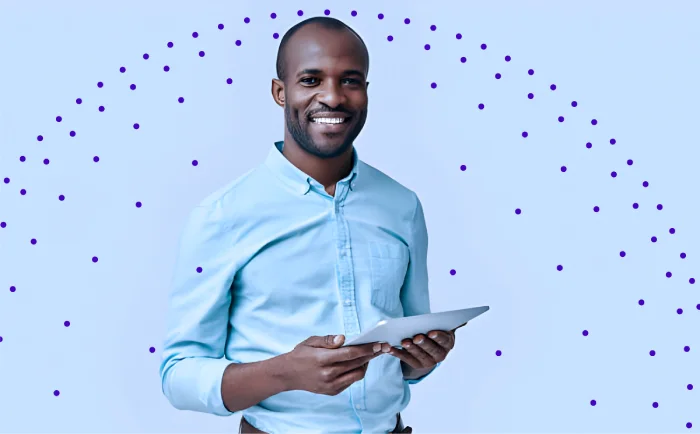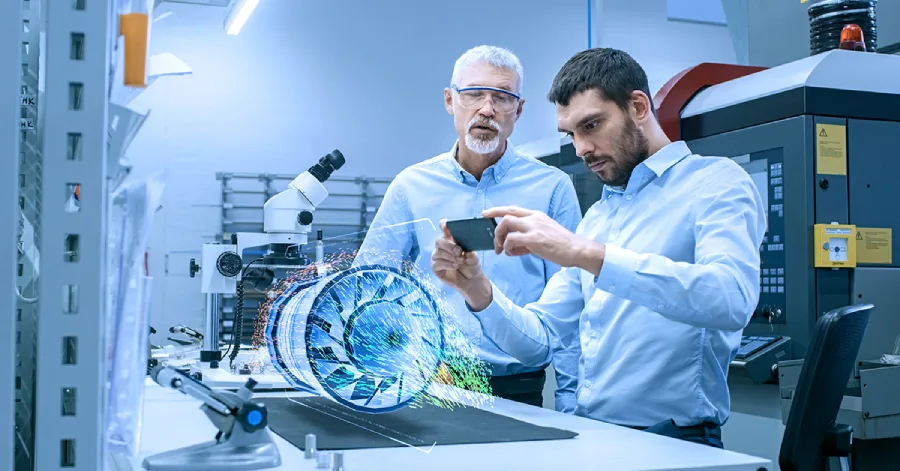5 Must-Know Trends That Can Shape Workforce Development in 2025
- Published on: December 31, 2024
- |
- Updated on: May 28, 2025
- |
- Reading Time: 6 mins
- |
-
Views
- |
With tech occupations facing a 6% annual replacement rate between 2024 and 2034, around 350,000 workers each year will need new skills due to retirements and separations. The stakes are higher than ever, and creating learning experiences that address today’s needs while preparing people for the future is essential.
Employees want learning that fits naturally into their lives and truly makes a difference. At the heart of this change is the idea of empowering people with the right tools, technologies, and strategies to succeed. To make this transition even smoother in the coming year, here are a few essential technology trends that EdTech can embrace.
1. Personalized and Adaptive Microlearning for Workforce Success
Adaptive microlearning enhances employee training by offering small, focused learning experiences tailored to each person’s preferences, pace, and skill level. Inspired by personal learning apps, this approach meets the demand for flexible training that seamlessly fits into employees’ daily tasks.
With AI integrated into the content, adaptive microlearning adjusts based on feedback and progress, ensuring the training remains engaging and effective. This approach helps employees retain knowledge, reduces information overload by breaking content into manageable pieces, and ultimately boosts job performance and satisfaction.
2. Blockchain Credentials for a Skills-Driven Future
Skills-based credentialing and blockchain certification are changing how we think about professional qualifications. Instead of relying on traditional degrees, which don’t always reflect someone’s actual skills, these systems offer secure, verifiable micro-credentials linked to specific abilities or courses. This is especially valuable in the gig economy, where portable, skills-focused credentials are in high demand.
Blockchain technology makes certifications secure, tamper-proof, and easy to verify, saving time for both job seekers and employers. For example, solutions like the Infosys Blockchain Skills Verification let individuals manage and share their credentials while giving employers access to accurate, reliable information. These certifications stay current with updated skills and can connect to global networks, making them valuable across industries. This approach helps build a more adaptable workforce, focused on real skills and ready to meet evolving job demands.
3. AI Coaches and Bots Driving Smarter Employee Development
AI chatbots are changing the way mentorship works by offering personalized, real-time support for employees. Using smart AI, these bots work alongside traditional coaching, making it easier and more affordable to provide mentorship. They look at company data and employee performance to give useful feedback, helpful tips, and learning resources. By adjusting to each employee’s needs, the bots offer advice that’s relevant and suggest content to fill skill gaps, making mentorship more accessible and effective for everyone.
These tools can respond to employee’s evolving goals and identify skill gaps to recommend relevant learning paths. Organizations also gain valuable analytics to track progress and refine programs, ensuring mentorship stays aligned with workforce needs and business goals. This approach enhances individual growth while building a more adaptable and resilient workforce.
4. Wearable Tech for Real-Time, On-the-Move Training
With the rise of IoT devices, wearables like smartwatches and AR glasses enable employees to learn on the job without interrupting their work, making training more hands-on and relevant. These devices provide real-time, contextual information and guidance, helping employees stay focused while learning. For example, an AR headset can show step-by-step instructions while an employee works, helping them learn as they go.
Wearables like these allow employees to pick up new skills while performing their regular tasks, making training more practical and efficient. VR also provides a safe way to practice complex skills without any real-world risk. By connecting training content with popular wearable devices, companies can create learning experiences that are easier to follow and help employees pick up new skills faster. This leads to a more skilled, adaptable workforce that can keep up with changing industry needs.
5. AI Job Matching and Skills Ontology for Tomorrow’s Workforce
As skill-based hiring becomes more common, employers are turning to AI-powered platforms that use skill ontologies to improve their hiring strategies. These ontologies organize skills into structured categories, making it easier for AI to match employees’ abilities with the right job roles and future needs.
By analyzing skills data, employee performance, and market trends, AI can help companies spot potential skill gaps before they become an issue. With this approach, businesses can better understand which skills are in demand, ensuring they hire the right talent for emerging roles. It also helps companies stay ahead in their recruitment efforts, making smarter decisions about hiring and employee development while giving workers the chance to grow and align with future workforce needs.
Bonus Trend: Managed Learning Services for Scalable Career Preparedness
Managed learning services (MLS) are being adopted by universities and community colleges to scale their career preparedness efforts. By partnering with MLS providers, institutions can outsource curriculum design, technology integrations, and even learner support. This frees up faculty and administrators to focus on strategic initiatives. This arrangement ensures continuous updates to course content based on changing industry requirements, helping learners acquire relevant skills without delay. From shared digital libraries to on-demand tutoring networks, MLS platforms offer a one-stop solution for students and educators. As career readiness programs grow to include hybrid, online, and micro-credential offerings, managed learning services help close the gap between academic objectives and real-world workforce needs. This is particularly critical in fields where today’s sought-after skill can quickly become tomorrow’s baseline requirement.
Workforce development must take center stage in all organizational strategies. The changing job market calls for equipping employees with the skills to adapt and succeed. This year, focus on growth, learning, and preparing employees for future workforce needs. By equipping teams with the skills to adapt and succeed, organizations can stay competitive and ready for the challenges of a changing job market, ensuring long-term success.
FAQs
A traditional Learning Management System (LMS) focuses on delivering and tracking academic coursework. A Student success platform with career readiness features, on the other hand, includes tools like AI-driven mentoring, skills-based assessments, and personalized learning paths. It’s designed to not only teach material but also to align students’ skill development with emerging industry needs and career opportunities—critical for both universities and community colleges seeking to keep pace with rapidly changing job markets.
Career services platforms increasingly support adaptive microlearning by integrating small, targeted learning modules for in-demand skills. These platforms can leverage AI insights from student progress and feedback—similar to the way microlearning content tailors itself to the individual. As a result, students can continuously hone the specific competencies employers look for, improving engagement and post-graduation outcomes.
AI job-matching platforms use skills ontologies to categorize competencies and match them with industry needs. Community colleges can automatically pair students with the right training or job placements, based on real-time labor market demands. This data-driven approach helps institutions proactively close skill gaps, improving graduate employability and strengthening local industry partnerships.
AI-driven chatbots act as real-time ‘digital mentors,’ offering personalized support and feedback. They draw on data like course performance, skill gaps, and even relevant career pathways to offer timely advice or targeted learning resources. This approach can reduce the burden on career services staff and provide students with around-the-clock assistance—bolstering both engagement and readiness for future roles.
Managed Learning Services are most beneficial when a college or university needs to quickly adapt curricula, integrate new technologies, and manage large-scale reskilling or upskilling initiatives. MLS providers handle course design, platform integration, and learner support—freeing faculty and administrators to focus on strategic planning. This is especially valuable for meeting rapid industry changes and ensuring that students develop market-aligned skill sets.

Get In Touch
Reach out to our team with your question and our representatives will get back to you within 24 working hours.


